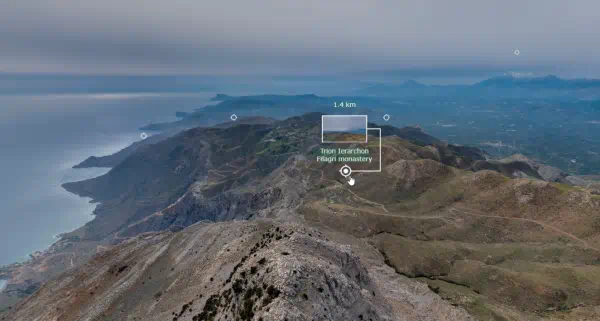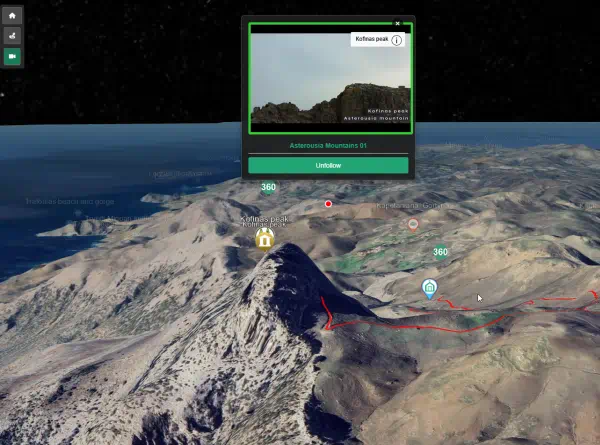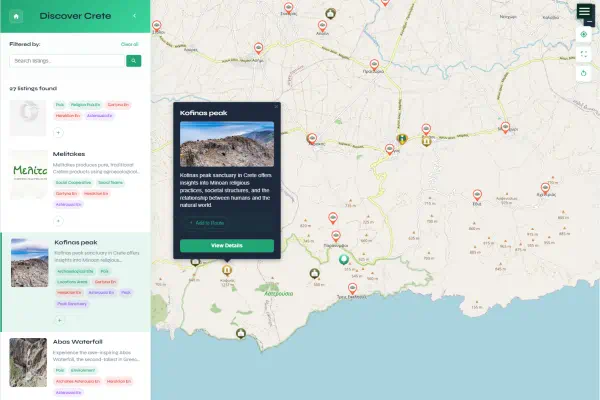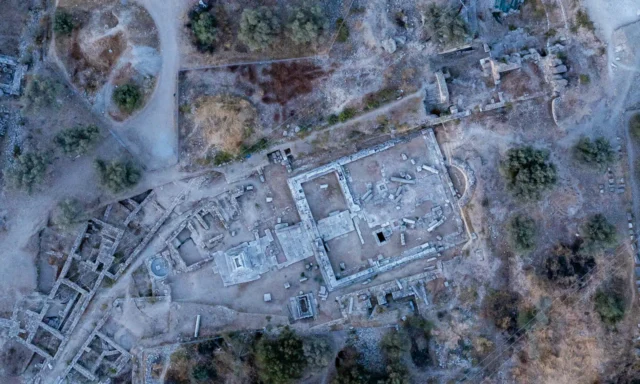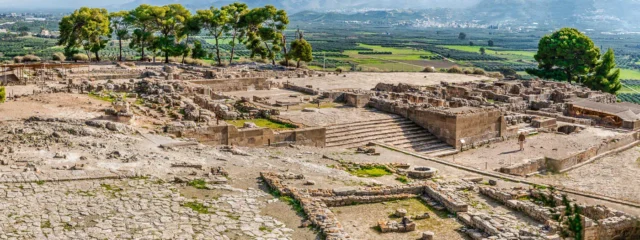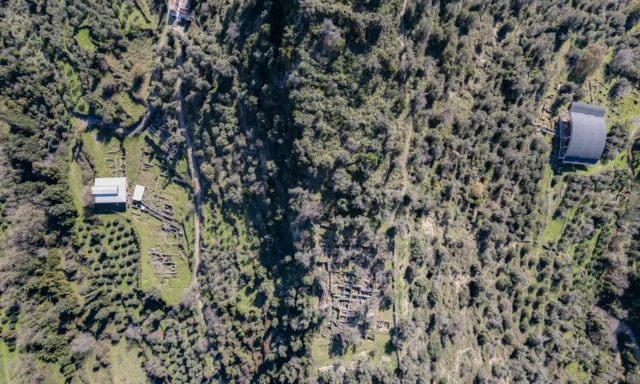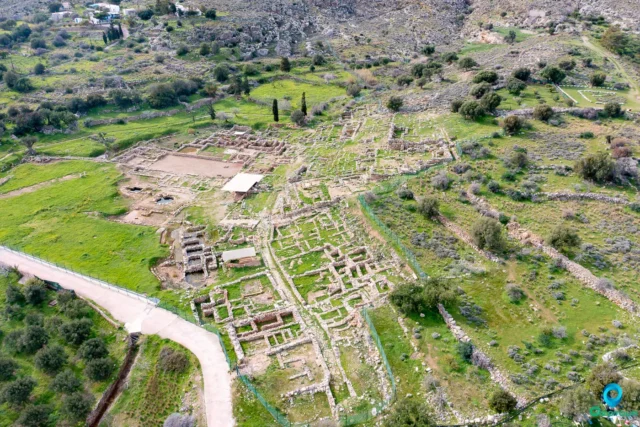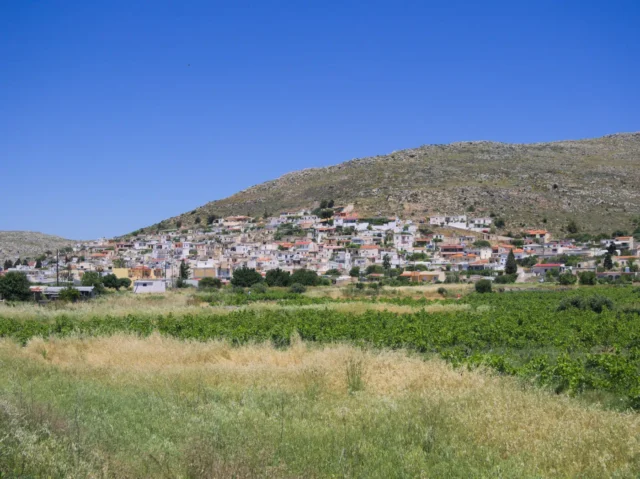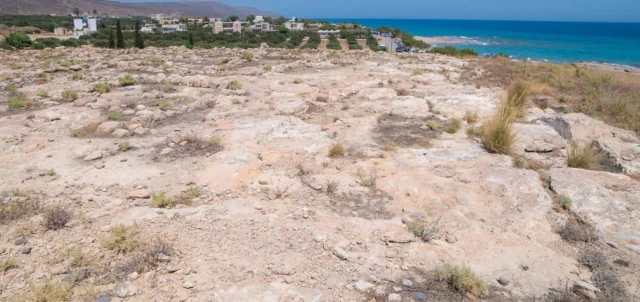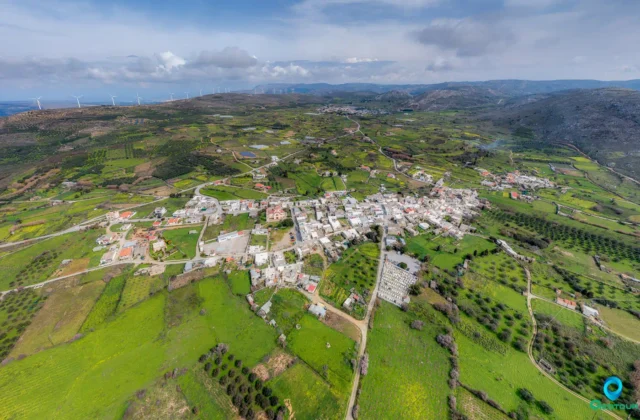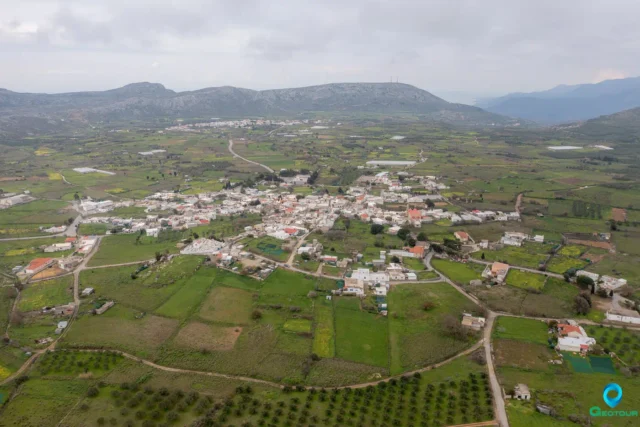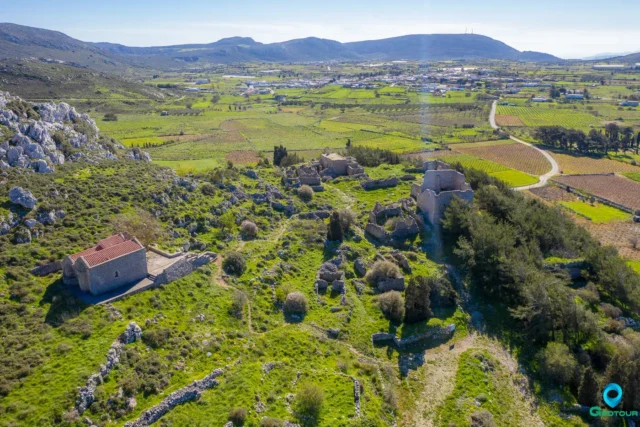Livari is situated on the south-eastern coast of Crete, characterized by a relatively flat coastal plain bordered by steep, low hills to the north. The coastal plain is dissected by several streams, some flowing through deep gorges, and includes a spring that provides a year-round water supply. The geology of the area consists of Miocene conglomerate composed of limestone, dolomite, and chert. This area is part of a significant settlement zone that includes a Minoan coastal settlement.
Specific Sites within Livari
- Livari, Cheromylia This site is positioned on the slopes of a low hillock on the west side of Livari Bay. The hill slopes gently to the west with a series of terraces, while the eastern and northeastern sides are steep.
- Livari, Kastrokephalaki Located on a rocky ridge formed of limestone and conglomerate on the northwestern edge of the Livari coastal plateau.
- Livari, Chlios This site occupies the southernmost tip of a plateau that slopes slightly toward the Bay of Livari. The terrain is marked by phrygana vegetation and prickly scrub.
Livari is recognized as a significant archaeological site in south-eastern Crete, offering insights into various historical periods and cultural transitions. Archaeological investigations have revealed evidence spanning from the Mesolithic period to modern times. The site’s strategic coastal location and fertile hinterland have made it a focal point for settlement and maritime activities throughout history.
Historical Significance
- Early Discoveries: Livari first gained attention as a potential archaeological site shortly before World War II. Fritz Schachermeyr, during a survey in 1938, noted the presence of Minoan sherds in the area.
- Systematic Exploration: Systematic archaeological prospection began in 1987, bringing Livari and its ruins into focus for intensive study.
- Key Campaigns: The archaeological campaigns in 2000 and 2008 yielded significant documented finds, enhancing our understanding of the site’s historical importance.
Multi-Period Settlement
Livari exhibits a complex history of human occupation across several distinct periods:
- Mesolithic Period: Evidenced by lithic assemblages characteristic of the early Holocene Aegean island lithic tradition (9000-7000 cal BC), indicating early hunter-gatherer activity.
- Bronze Age: Encompasses Early, Middle, and Late Minoan periods, marked by coastal settlements, cemeteries, and architectural remains.
- Classical/Hellenistic Period: Possibly linked to the ancient Polis of Stalai, suggesting a period of urban development and maritime activity.
- Venetian Period: Indicated by structures like the Vigla (watchtower) at SITE 39A, reflecting the region’s role in Venetian maritime defense.
Archaeological Importance
Livari is crucial for understanding the broader archaeological context of Crete and the Aegean. It provides valuable evidence for:
- Early Human Activity: The Mesolithic finds at Livari contribute to our understanding of early Holocene hunter-gatherer adaptations and maritime networks in the Aegean.
- Minoan Civilization: The site’s Minoan settlements and architectural features offer insights into the economic, social, and defensive strategies of Minoan coastal communities.
- Cultural Transitions: Livari’s multi-period occupation allows researchers to study the transitions and interactions between different cultures and historical periods in the region.
Research and Documentation
Extensive surveys and mapping efforts have been conducted to document the topography and structures of Livari. These efforts aim to:
- Record Structures: Document all recognizable anthropogenic and artificial structures, regardless of age, to understand their relationships.
- Establish Landmarks: Define topographical landmarks to provide clear reference points for describing the area and its archaeological features.
- Correct Misconceptions: Address and correct previous misunderstandings about the site’s topography and the relationships between different areas.
Current State and Future Research
While Livari Cheromylia, is an important archaeological location with a Minoan coastal settlement, several factors contribute to the lack of readily visible structures on the site today.
- Poor Preservation: The structures at Cheromylia are poorly preserved. What remains are scattered blocks and wall segments, which require careful examination to identify. For example, Building I has limestone or conglomerate blocks as construction material, but the bedrock floors of all four rooms are uneven.
- Erosion: The coastal environment has led to erosion of Holocene soil deposits, exposing bedrock and scattering archaeological remains.
- Vegetation Cover: The presence of vegetation obscures the already degraded structural remains.
- Limited Excavation: Without extensive excavation, much of the site remains buried or covered, leaving only the most superficial traces visible.
- Dirt Road: A modern dirt road runs along the foothill, potentially disturbing and obscuring archaeological remains.
Site Details Contributing to Poor Visibility
- The site is located on the slopes of a low hillock, with the most significant finds concentrated in an area approximately 80-90 x 60 meters.
- Surface Finds: The frequency of surface finds, such as ceramic sherds, diminishes in the area above the dirt road.
- “Megalithic” Blocks: Near the shoreline, a stone formation resembles a row of crumbled “megalithic” blocks, possibly the remains of a wall.
- Wall Segments: There are remains of wall segments forming edges, situated approximately 1-2 meters above sea level. These may be remains of buildings or terrace walls.
- Building I: It consists of four rooms, with uneven bedrock remaining as floors.
- Building II: The eastern wall of Room 2 is difficult to detect due to its poor state of preservation.
- Struktur V: This small dimension structure could indicate a tower-like shape for guarding purposes.
References
To produce a reference section for the three PDF sources, I will compile the author(s), year, title, and publication details for each, as available in the provided texts.
References
- Schlager, N., Alusik, T., Brandl, M., Fuchs, L., Günkel-Maschek, U., Kurtze, C., Mlinar, E., Pietrovito, M., Reiter, W., & Schlager, R. 2010. Jahreshefte des Österreichischen Archäologischen Institutes in Wien, Band 79. Wien: Österreichisches Archäologisches Institut.
- Tristan Carter, Danica D. Mihailovic, Yiannis Papadatos and Chrysa Sofianou, 2016. The Cretan Mesolithic in context: new data from Livari Skiadi (SE Crete). Documenta Praehistorica XLIII
- Papadatos, Y., Sofianou, C. (2015). Livari Skiadi. A Minoan cemetery in Southeast Crete. I. Excavation and finds. Institute for Aegean Prehistory Academic Press. Philadelphia.

